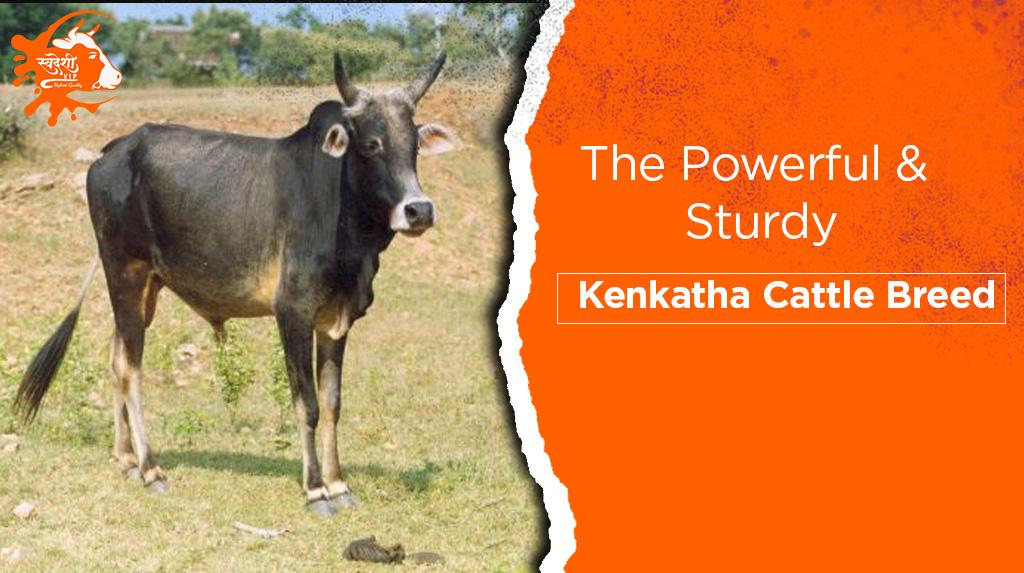
The indigenous cattle breeds are vanishing from our motherland. They hold a special value to the land and the people for nutrition and well-being. As a nation, we have an agricultural culture fundamentally with probably the longest history of agriculture on the planet. Cattle, especially bulls and cows, have been an integral part of shaping our food, our land, and our lives.
Today, many things may have changed, but still, to enrich this soil, you need these animals. India had over one hundred and twenty indigenous breeds of cattle. But today, only thirty-seven of them survived – the rest have become extinct. It is very important that at least the remaining ones are preserved. We need to make people aware that these breeds are all dying fast. Unless we conserve them now, they won’t be there much longer.
The native cow breeds are effective sources of quality milk. A2 Milk, meaning that it keeps you safe from coronary disease and eliminates the cause of lactose intolerance. This milk is much easier to digest because of the absence of the protein found in A1 milk. A1 milk is said to have opiate-like effects that may cause the development of mild to grave medical conditions. One such breed is the Kenkatha cattle breed. These sturdy and strong, hardworking cattle are found in the lands of Uttar Pradesh and Madhya Pradesh.
The name of the breed ‘Kenkatha’ cattle breed is taken from the Ken River that separates the Uttar Pradesh and Madhya Pradesh states of India. Kenkatha or Kenwariya breed hails through the provinces of Bundelkhand in Uttar Pradesh, along the banks of the river Ken and Vindhya ranges in Madhya Pradesh. The tract of this breed lies along the banks of River Ken in the Panna and Tikamgarh districts of Madhya Pradesh, Chhatarpur, Lalitpur, Banda, and Hamirpur districts of Uttar Pradesh.
This Kenkatha cattle breed can survive in harsh environments, as it is more common in the region’s hilly nature and poor feed resources. Animals that have strong feet can only grow well in this region. The bullocks of this breed are comparatively small but solid and sturdy. They are specified for good cultivators in rocky areas and are famous for an on-road light draught. This breed has always flourished in the consumption needs of small families.
The management system is pervasive for maintaining these cattle. Cows are fed young stock and kept for grazing. However, the bullocks are given good-quality straws. They can sustain the ability to survive on poor feeding means. These animals are used to cover long distances for grazing pasture lands. Husk and straw are used to feed the Kenkatha Cattle Breed.
Read Our Article: Unique Malnad Gidda Cow Breed
As Kenkatha cattle breed is not given the required attention and detailed specification, this blog will help us understand its detailed characteristics based on the breeding tract, physical characteristics, production performance, and generic specification. However, looking forward to strategising improvement and conservation is essential.
Firstly, Kenkatha cattle breed needs to have a society of its own, where people must be trained and maintained to protect and upgrade this Kenkatha Cattle Breed. This breed requires special attention to sustain itself economically for the country.
The Kenkatha breed of cattle has been interbreeding with other non-descript cattle without restriction, leading to a rapid decline in its population. It is essential to take immediate steps to conserve and enhance this indigenous breed of cattle.
The Kenkatha cattle breed, native to India, stands out as a testament to its rich agricultural heritage and commitment to sustainable farming practices. The future of the Kenkatha breed hinges on the balance between traditional farming practices and modern agrarian advancements.
By leveraging technology and scientific research while maintaining the breed’s unique characteristics, productivity and sustainability can be enhanced. This breed, known for its resilience and adaptability, plays a crucial role in the livelihoods of rural communities across various regions of India.
To buy top quality and 100% natural organic A2 milk, visit SwadeshiVIP.
This breed is small, robust, and sturdy. It has different colours, from grey on the barrel to dark grey on the rest of the body. It is mainly used for draught purposes, light draught on roads, and cultivation.
The daily milk yield of a Kenkatha cow ranges from 1.0 to 3.0 kg in a day.
The Kenkatha cow, also known as the Kenwariya, originated in the provinces of Bundelkhand in Uttar Pradesh, along the banks of the river Ken and the Vindhyas hilly range in Madhya Pradesh.
Kenkatha cattle breeds are mainly used for draught due to their strength and endurance. They are valued for their nutritional milk, but unlike other cow breeds, they don’t produce much.
The Kenkatha cattle breed produces A2 milk with high butterfat content, making it rich and creamy. It is considered to have good nutritional value and is often used in traditional dairy products.
Kenkatha cattle breed requires minimal maintenance and can graze on sparse vegetation, making them ideal for regions with limited fodder. Regular health check-ups and proper vaccination are essential to maintain their well-being.
The benefits of raising Kenkatha cattle include their adaptability to harsh environments, low maintenance requirements, and ability to provide both draught power and nutritious milk. They are also known for their disease resistance, which reduces the cost of veterinary care.
